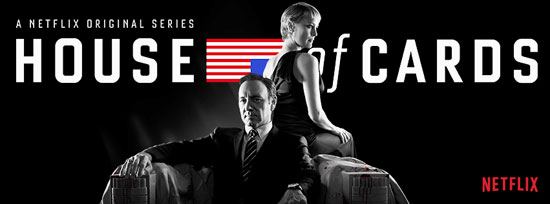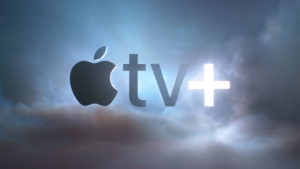Netflix, which launchedin 1997 as a DVD-by-mail service that competed with Blockbuster Videobefore successfully transitioning into becoming the leading online videoservice, reported at the end of July that its second quarter earningshad more than doubled, while it also surpassed 50 million worldwidesubscribers for the first time.
It has earned critical praise for its original content as well.Netflix, along with pay-TV service HBO and basic cablechannel AMC, managed to lock up the best drama Emmy nominations -beating out broadcast nets ABC, CBS, Fox and NBC.
It is thus no wonder that other OTT service providers, includingAmazon Prime, Hulu and even Yahoo are now competing fororiginal content. This has created new opportunities for producers,writers, actors and just about anyone in the content creationbusiness.
The Evolution of TV
All this additional content has continued to fragment the traditionalviewing audience — and instead of merely a handful of choices,there are literally hundreds on cable. The streaming services arejust the latest to offer alternatives to broadcast network programming.
“I wouldn’t use the word ‘disrupter,'” Bill Niemeyer, new videostrategist at The Diffusion Group (TDG), told the E-Commerce Times.
“Netflix hasdone an incredible job with its original content,” he acknowledged, “but what we’re seeingwith it and with Amazon, Yahoo and Hulu is really evolutionary morethan revolutionary. This is just the next step in the evolution oforiginal content.”
This evolution began in the 1950s, added Niemeyer, when there were just four networks, including the now-defunct DuPontNetwork. Even cable’s arrival in the 1970s and early 1980s didn’tactually open up that many alternative viewing options.
“HBO in its early days was really just a place to view old movies, orat least old ‘new movies’ that had been in theaters recently,” saidNiemeyer.
“HBO only slowly introduced original content, but it wasn’tuntil the late 1990s that The Sopranos put them on the map as anoriginal content producer. It was the show that got people tosubscribe to HBO, and now Showtime and other cable channels areregarded critically so it is usual business for them.”
Drawing in the Audience
All that critical acclaim has made HBO, Showtime and even AMC –another cable channel that started out with just old movies in thevault — serious destinations for viewers. Now Netflix is followingsuit in drawing eyeballs for more than just what is in the archives.
“Netflix has the benefit that HBO broke down the barrier of competingwith traditional networks,” Greg Ireland, research manager formultiscreen video at IDC, told the E-Commerce Times. “Netflixis also an example of company that has successfully reinvented itselfto meet a changing market.”
It already had successfully made the transition from DVD-by-mailservice to streaming, but now its original programming is what ishelping draw in new subscribers, including the reported 570,000U.S. subscribers and 1.1 million international viewers it gainedin the second quarter of 2014.
“Many factors come into play when determining success for streamingservice providers, but the quality and desirability of the content isthe most important,” Myra Moore, founder and principal analyst atDigital Tech Consulting, told the E-Commerce Times.
“A library of old moviesand TV shows doesn’t provide a streaming service provider with thejuice it needs to compete on a high level,” she pointed out. “Offering originalprogramming can definitely drive subscribers — and Netflix has, so far,done a pretty good job of that.”
Battle of the Binge
Netflix has also changed the way people are viewing content by makingevery episode of a new “season” of episodes available. For viewers,this means a weekend-long viewing marathon instead of a weekly rollout of program — the method employed by broadcasters and even cable channels for decades.
“In a way, this puts a challenge on the traditional broadcastviewing experience,” said IDC’s Ireland. “This isn’t a battle yet, but it is setting up abattleground of sorts.”
The downside, of course, is whether Netflix — or any streaming service –can sustain enough content to keep subscribers locked in while theywait for the next big thing.
“There is a big splash when a new season launches,” noted Ireland.
“However, in one way the show loses the potential buzz from onlinespeculation and discussion. Viewers can’t really discuss the shows onforums and social media, as that is lost. … There is no waiting untilnext week, and there isn’t the option for viewers to become part of acommunity over the course of a two- or three-month season,” he explained.
“Really, it is a matter of taste,” Ireland said. “Do you want toview it as a Dan Brown page-turner or wait each week and think aboutit? Netflix’s model is working,” Ireland said, “so it isn’t really a battle yet.”
Gambling on More Than Ratings
The streaming services are not really alone inbetting on only a handful of series to carry the weight. Mostbroadcast networks have long had to gamble on a number of shows eachnew season and hope some stick. The difference is that Netflix isn’tbetting on a fall or mid-season debut, but instead rolls out newprogramming over the course of the year.
“Netflix isn’t necessarily at any sort of disadvantage compared to anyother cable channel or network that has to gamble on a hot show or twoto carry it,” said Ireland.
“If anything, Netflix still gets the buzzand then can move on to the next show if the viewers don’t like it.There is nothing to cancel, as the episodes are all there. Those whodon’t enjoy it can just opt out while those who want to stick with itaren’t left with a show that was canceled midseason.”
Netflix has even shown that it is eager to bet on content that didn’tfare so well on broadcast TV — notably Arrested Development.
“Netflix picked up Arrested Development after no broadcaster wanted totouch the canceled series with a 10-foot pole,” added Niemeyer. “Thisis because Netflix has an advantage that goes beyond just looking atratings. It has taken data caps and they can see what shows in itslibrary are popular. That helps them determine what shows should bemade. TV has long had ratings to determine programming, but that’s notthe same things as what the server logs can show you.”
Will Others Stream In?
Although Netflix has managed to gain critical acclaim and draw inviewers, it is not the only service that has been developing originalcontent. The question becomes whether other OTT services will have asmuch luck — and whether there is in fact room for more players, and ifconsumers will be willing to pay to access the content.
“We are in what I call the ‘everybody jump in’ era with streamingservices,” said Digital Tech Consulting’s Moore.
“Lots of players arejumping in now and, of course, attrition is setting in. Not only isit not sustainable because of the cost of buying into multipleservices, but because content fragmentation is confusing andinconvenient for viewers,” she pointed out.
“The industry still lacks a well-designed and organized interface instreaming receivers that can elegantly aggregate the differentstreaming content that is available,” Moore noted.
“The solution may bein one — or more realistically, several — well-executed interfaces,but also in receiving devices that incorporate multiple types ofreception of content, whether the content is from traditional pay-TVoperators, OTT service providers, free-to-air broadcasters,” she suggested.
Getting this part right, “as well as there being continuing advancesin obtaining the right kinds of streaming rights,” Moore said, “is the nextimportant step in the video-streaming industry.”






















































Social Media
See all Social Media